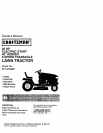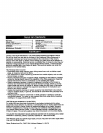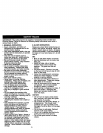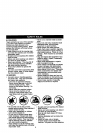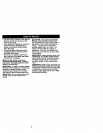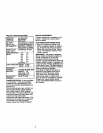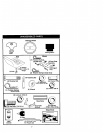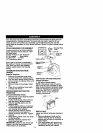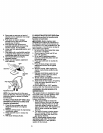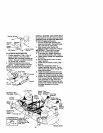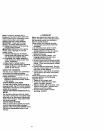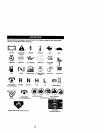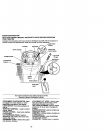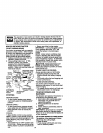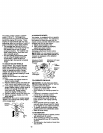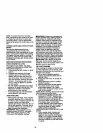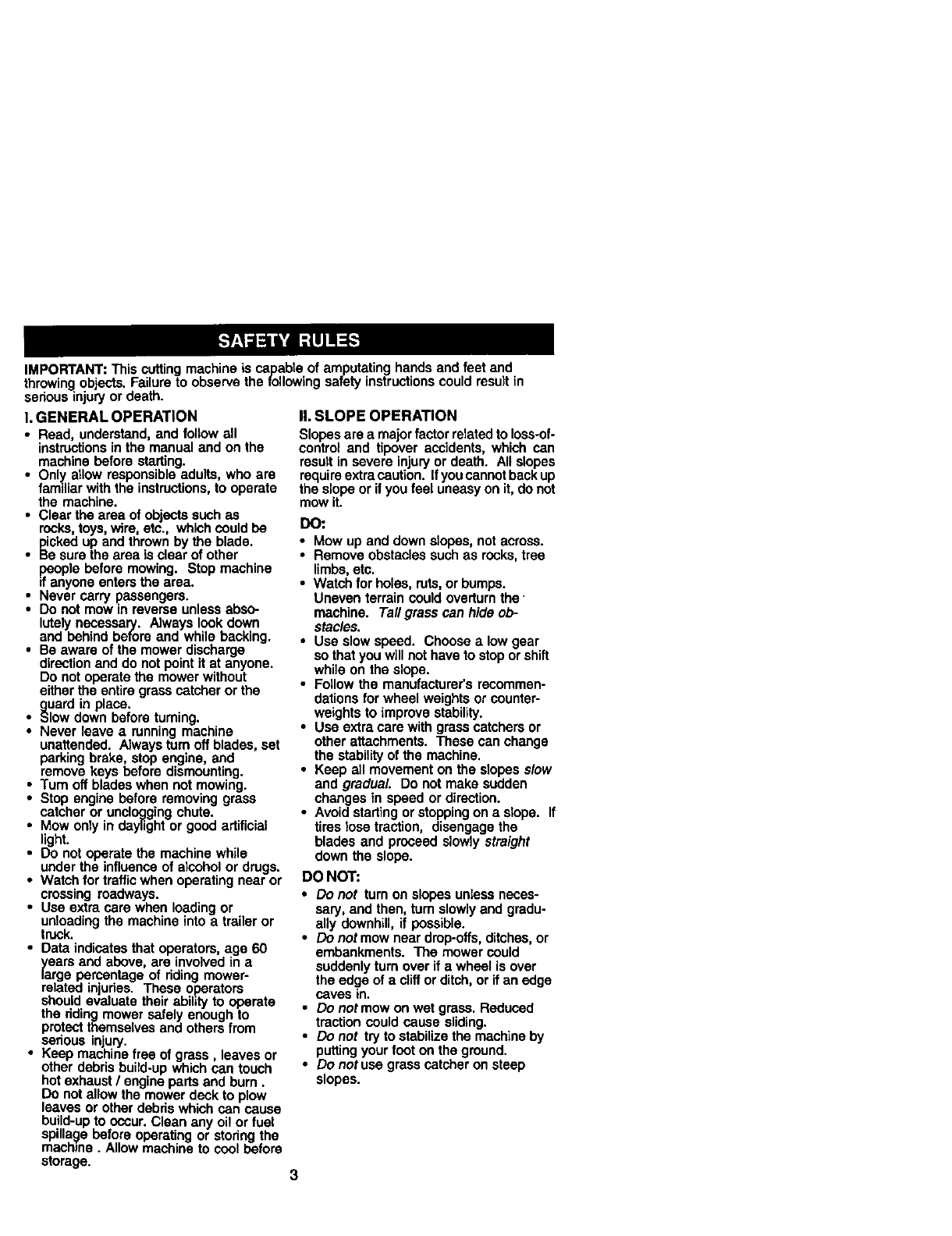
IMPORTANT: This curling mach ne s capabe of amputating hands and feet and
throwingobjects. Failure to observe the followingsafety instructions could result in
serious injuryor death.
I. GENERAL OPERATION
• Read, understand, and follow all
instructionsin the manual and on the
machine before starting.
• Onl_ allow responsible adults, who are
famdiar with the instructions,to operate
the machine.
• Clear the area of objects such as
rocks,toys, wire, etc. which could be
picked up and thrown by the blade.
• Be Surethe area isclear of other
i_ople before mowing. Stop machine
if anyone enters the area.
Never carry passengers.
Do not mow in reverse unless abso-
utely necessary, h3ways look down
and behind before and while back ng.
• Be aware of the mower discharge
directionand do not pointit at anyone.
DO not operate the mower without
either the entire grass catcher or the
guard in place.
_•Slow down before turning.
Never leave e running machine
unattended. /dways turn off blades, set
parking brake stop engine, and
remove keys before dismounting.
Turn off btades when not mowing.
• Stop engine before removing grass
catcher or unclogging chute.
• Mow only in daylight or good artificia|
light.
• Do not operate the machine while
under the inftuance ol alcohol or dru_s.
• Watch for traffic when operating near or
crossing roadways.
• Use extra care when loading or
unloading the machine into a trailer or
truck.
• Data indicates that operators, age 60
years and above, are involved in a
large percentage of riding mower-
related inufies. These olj)erators
should evaluate the r abihty to operate
the ridingmower safely enough to
protect t.hemselves and others from
senous injury.
• Keep machine free of grass, leaves or
other debris build-up which can touch
hot exhaust / engine parts and burn.
Do not allow the mower deck to plow
leaves or other debris which can cause
build-upto occur. Clean any oil or fuel
spillage before operating or storing the
machine. Allow machine to cool before
storage.
I|. SLOPE OPERATION
S opes are a majorfactor related to loss-of-
control and tipever accidents, wh ch can
result in severe in ury or death. At| stopes
require extra caution. Ifyou cannotback up
the slope or if you feel uneasy on it, do not
mow it.
DO*.
• Mow up and down slopes, not across.
• Remove obstacles such as rocks, tree
limbs, etc.
• Watch for ho|es, ruts, or bumps.
Uneven terrain could overturn the
machine. Tall grass can hide ob-
stacles.
• Use slow speed. Choose a low gear
so that you will not have to stop or shift
while on the slope.
• Follow the manufacturer's recommen-
dations for wheel weights or counter-
weights to improve stability.
• Usa extra care with grasscatchers or
other attachments. These can change
the stabilityof the machine.
• Keep all movement on the slopes slow
and gradual Do not make sudden
changes in speed or direction.
• Avoid starting or stopping on a slope. If
tires lose traction, disengage the
blades and proceed slowly straight
down the slope.
DO NOT:
• Do not turn on slopes untsss neces-
sary, and then, turn slowlyand gradu-
ally downhill, if possible.
• Do not mow near dmp-offs, ditches, or
embankments. The mower could
suddenly turn over if e wheel is over
the edge of a cliff or ditch,or ifan edge
caves in.
• Do not mow on wet grass. Reduced
traction could cause sliding.
• Do not try tostabitize the machine by
putting your foot on the ground.
• Do not use grass catcher on steep
slopes.



